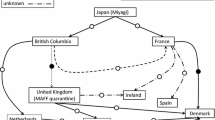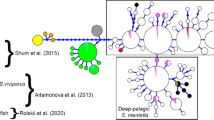Abstract
The Kumamoto oyster Crassostrea sikamea is distinguished from the closely related Pacific oyster C. gigas by concordant differences in 16S rDNA, allozymes, and a one-way gametic incompatibility. After repeated failures to find this oyster in its native habitat, we speculated in 1994 that “the Kumamoto oyster may be extinct in Japan”. In September 1996, we sampled small, deep-cupped oysters from the Ariake Sea and typed these for 16S rDNA and ITS-1 DNA markers previously shown to be diagnostic for the three most common oysters in the Ariake Sea, C. gigas, C. sikamea and C. ariakensis. Our earlier suggestion of the demise of C. sikamea proved incorrect. Of the 256 oysters sampled, 181 (71%) were C. gigas, 53 (21%) were C. sikamea, and 22 (9%) were C. ariakensis; no interspecific hybrids were observed. The distributions of C. sikamea and C. ariakensis are clumped in the Ariake Sea: C. sikamea occurs on the eastern and northern shores, C. ariakensis occurs only in the northern part. These results emphasize the value of molecular markers for discriminating these morphologically plastic species both in the field and in aquaculture.
Similar content being viewed by others
Author information
Authors and Affiliations
Additional information
Received 6 July 1998 / Accepted 8 October 1998
Rights and permissions
About this article
Cite this article
Hedgecock, D., Li, G., Banks, M. et al. Occurrence of the Kumamoto oyster Crassostrea sikamea in the Ariake Sea, Japan. Marine Biology 133, 65–68 (1999). https://doi.org/10.1007/s002270050443
Issue Date:
DOI: https://doi.org/10.1007/s002270050443




